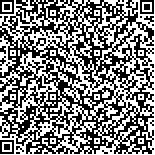Archive > Volume 41 Issue 6 > 2015,41(6):778-785. DOI:10.7519/j.issn.1000-0526.2015.06.013 Prev Next
Test and Comparison of Sustainable Suitability of Meteorological Indicators for Rice Cold Damages in the North of China
- Article
- Figures
- Metrics
- Preview PDF
- Reference
- Related
- Cited by
- Materials
Abstract:
The test and comparison of sustainability and suitability of agricultural meteorological index is very meaningful for improving agricultural meteorological operations. This paper counts the accuracy of defining rice cold damage with meteorological indicators in different ages by using the daily air temperature data in 1960-2010 and rice yield data from representative stations in the north of China. The application effect of rice cold damage indicators for elayed growthtype and steriletype is tested, and their differences are compared. The results show that the accuracy of May to September temperature indexes for defining the delay growthtype cold damage is around 78%, and the index is stable, showing good sustainability, and the accumulated temperature difference index is stable too, able to continue to apply. However, the accuracy of accumulated temperature anomaly index of elayedtype cold damage significantly is lower, not suitable to continue to use in most regions. For most of the representative counties, the indicators of daily average temperature, daily lowest temperature and its duration when defining the steriletype cold damage are applicable at the present stage, but the accuracy is low in a few counties and they should susped using, but the accuracy of lowest temperature indicator is slightly higher than the daily average temperature indicator. The elements and mechanism of these indicators have not changed, but their stability and sustainability have differences in regions and ages, so the indicators should be used selectively and revised timely to adapt to climate change and rice cultivation.
Keywords:
Project Supported:
Clc Number:


Mobile website









